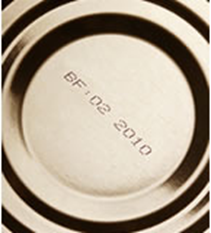Inventory Lots Overview
The EBMS inventory lots feature identifies a batch of product based on a lot number, date, or other unique identifier. An inventory item will contain multiple lots. The ability to track lots is necessary for industries that require a lot number to trace the source of purchased product, raw materials, or manufactured batches. Many food industries have traceability requirements. Some manufacturing companies are required to trace the source of raw materials or be able to identify batch details of finished goods. Dated product requires lots to track the sell by dates or expiration dates on product sold. The lots feature within EBMS adds the ability to trace product purchased, mixes manufactured, or batches of product sold.
The EBMS Lots feature can help many companies keep track of their inventory:
- Supply companies that are required to manage inventory for individual lots.
- Distributors that need the traceability for both products purchased and items sold.
- Companies required to scan and manage product with GTIN tractability codes.
- Manufacturers that need to trace raw materials consumed in the production process and/or product mixed or manufactured.
- Companies that sell products with expiration dates or other lot-specific details.
- Metal supply companies tracing the serial numbers of metal coil stock.
Inventory items must be classified using one of the following inventory Classifications:
-
Lots – Avg Cost: This classification should be selected to create inventory lots where the lot number does not affect the value of the product. This classification averages the cost value of each lot, rather than processing costs based on the individual lot costs.
-
Lots – Linked Cost: This classification links the cost to the lot number in a FIFO (First In, First Out) manner similar to other Track Count inventory items. Review the Inventory Counts Overview section for more details on linking inventory items.
Purchase or Manufacture Lots
Any inventory items with a Lots classification (either Lots - Avg Cost or Lots - Linked Cost) require a Lot Number when the items are purchased or manufactured.
The Lot Number and the Lot Date can be manually assigned or Auto-assigned by the software. Review the Creating Lots section for more details on creating the Product ID or creating inventory lot records, including dates.
Sell Lot Product
In the Inventory Lots module, a lot number is assigned each time an inventory item is sold, consumed within the manufacturing process, transferred to a job, or moved to another warehouse.
-
Scan lot numbers. (Review GTIN and ITF-14 Barcodes for lots-based scanning.)
-
Enter lot numbers.
-
Select lot numbers. (Review the Assigning Lots to a Sale or items Consumed section for details.)


Managing Lots
Managing the inventory stock levels of multiple lots can be a tedious task without the correct tools. Review Adjust Inventory Counts to review count adjustment for lot products.
The transactions associated with individual lots can be evaluated or adjusted within the inventory item or the Inventory Lots properties dialog. Review Tracing Lots and Reporting Lots Information section for details.
Review the Changing an Inventory Classification for instructions to changing the Classification to a Lots - Avg Cost or a Lots - Linked Cost classification.
Practical Scenarios
Scenario 1: A wholesale produce distributor is required to trace the source of fruit and vegetables sold to their customers. Some produce purchased already has a GTIN number and others are assigned a number before being sold. The GTIN (Global Trade Item Number) is a 12-digit to 14-digit number used to identify items including lots. EBMS tools are used to scan the GTIN when product is purchased, create GTIN labels, and record lots when sold. Some lots are also assigned expiration dates. The lots, barcode, and scanning features gives this distributor the tools required to meet the traceability requirements of a food distributor.
Scenario 2: A garden supply company sells lawn and garden supplies including grass seed mixes. Each batch of seed is assigned a lot number along with an expiration date. The detailed seed ingredients of individual lots must be included when the mixes are sold to customers. EBMS allows this supply company to trace the stock quantity of each batch of seed by lot number and date. The inventory lots feature traces the lot numbers of each ingredient as well as the batch number of the seed mixed using the EBMS manufacturing module. Convenient tools for lot lookup, scanning, and inventory lot management complement the EBMS point-of-sale and accounting system for this garden supply company.
Scenario 3: A metal roll forming company identifies the metal coil used to manufacture metal roofing and siding. The coil determines the thickness and color of the metal panels. The metal coil’s serial number duplicates as the lot number. The lots feature tracks the linear feet of coil on each roll tracking available inventory. This feature also links the metal panels sold to a customer to the original metal coil, for warranty and traceability purposes. The automation of coil assignments during roll forming, the built-in lot tracking of metal raw material, and the historical traceability of metal trim and panels gives this company the tools to properly manage their metal sales and manufacturing company.